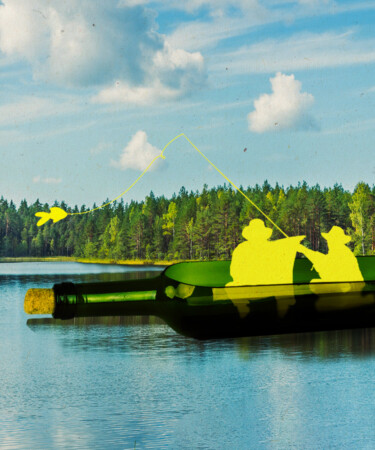We’ve all had the fantasy of slipping into a bathtub, pool, or even an entire lake of wine. (Just us?) But as fun as it sounds to snorkel through Sauvignon Blanc, cannonball into some Cava, or do flips in a crisp and fruity rosé, there’s no such thing as a real wine lake (that we know of, at least.) Instead, wine lake is a technical term that was invented to describe a massive overproduction of bulk wine in the European Union (EU).
Though the term appeared in an article in The New York Times in 1975, the concept of a wine lake made its way into the public sphere in the early aughts when Europe entered a full-on financial crisis due to excess wine. The issue reached a head around 2007, when reports surfaced signaling that Europe’s oversupply of wine became even more problematic: The continent had produced about 1.7 billion bottles more than it sold for several consecutive vintages.
At the time, the surplus was attributed to an over-planting of vines, decreased consumption of wine by the younger generation of Europeans, and an increase in imports of value wines from other countries. Winemaking regions in Australia and South America were taking off, and as the market flooded with these new, cheap imports, Europe started to drown in its oversupply. Regions like Sicily and Languedoc-Roussillon in the south of France were particularly affected by this phenomenon, as these areas were typically known for large quantities of bulk wine.
To address the abundance of wine, the EU would have to spend hundreds of millions of euros to distill the excess wine into industrial alcohol — a process dubbed “crisis distillation.” To metaphorically drain the wine lake, the EU also promised to pay farmers to rip up their vineyards as well as allotted 120 million euros to promote European wines in international markets. And for a time, this strategy seemed to work.
Fast-forward to present day, and wine regions are again dealing with oversupply issues. In August 2023, the French government announced that it would spend 200 million euros to fund the elimination of surplus wine production. Additionally, Bordeaux specifically received 57 million euros to rip out about 23,475 acres of vines in the region, offering farmers 6,000 euros per hectare.
This predicament has expanded outside Europe as well. Large-scale Washington State producer Chateau St. Michelle announced last fall that it would purchase 40 percent less fruit over the next five years, at a detriment to the local growers. And other countries like Australia are starting to report similar issues with sales and exports.
Unfortunately, it doesn’t look like this problem will go away anytime soon. Silicon Valley Bank’s most recent State of the U.S. Wine Industry report suggests that both wine sales and consumption continue to dwindle. On top of that, the numbers suggest that it’s the cheap, bulk wine in the under-$12 category that’s seeing the most severe decrease in sales, which doesn’t bode well for the overflowing wine lakes. So unless further plans are implemented to reduce this oversupply, it looks like some regions might drown in their own wine lakes.
*Image retrieved from RedBridge via stock.adobe.com
